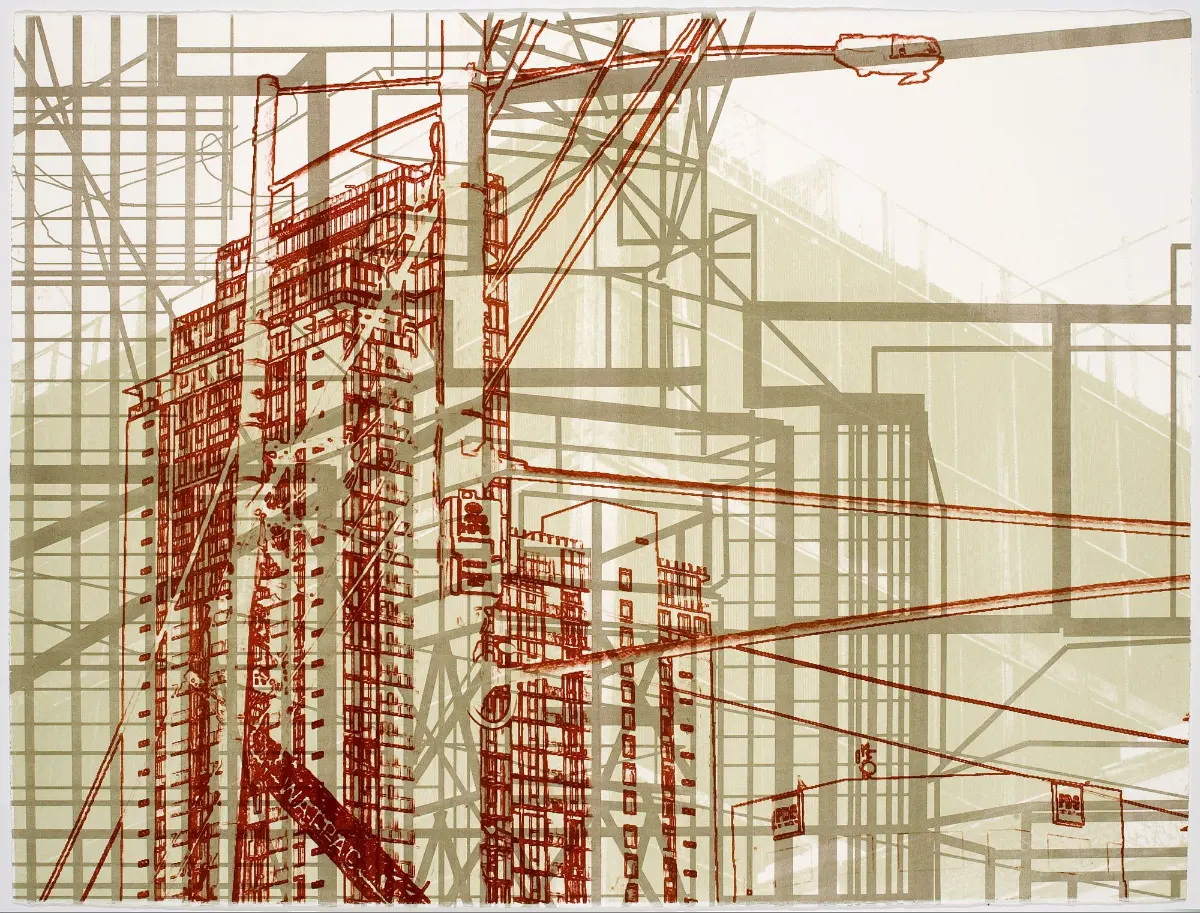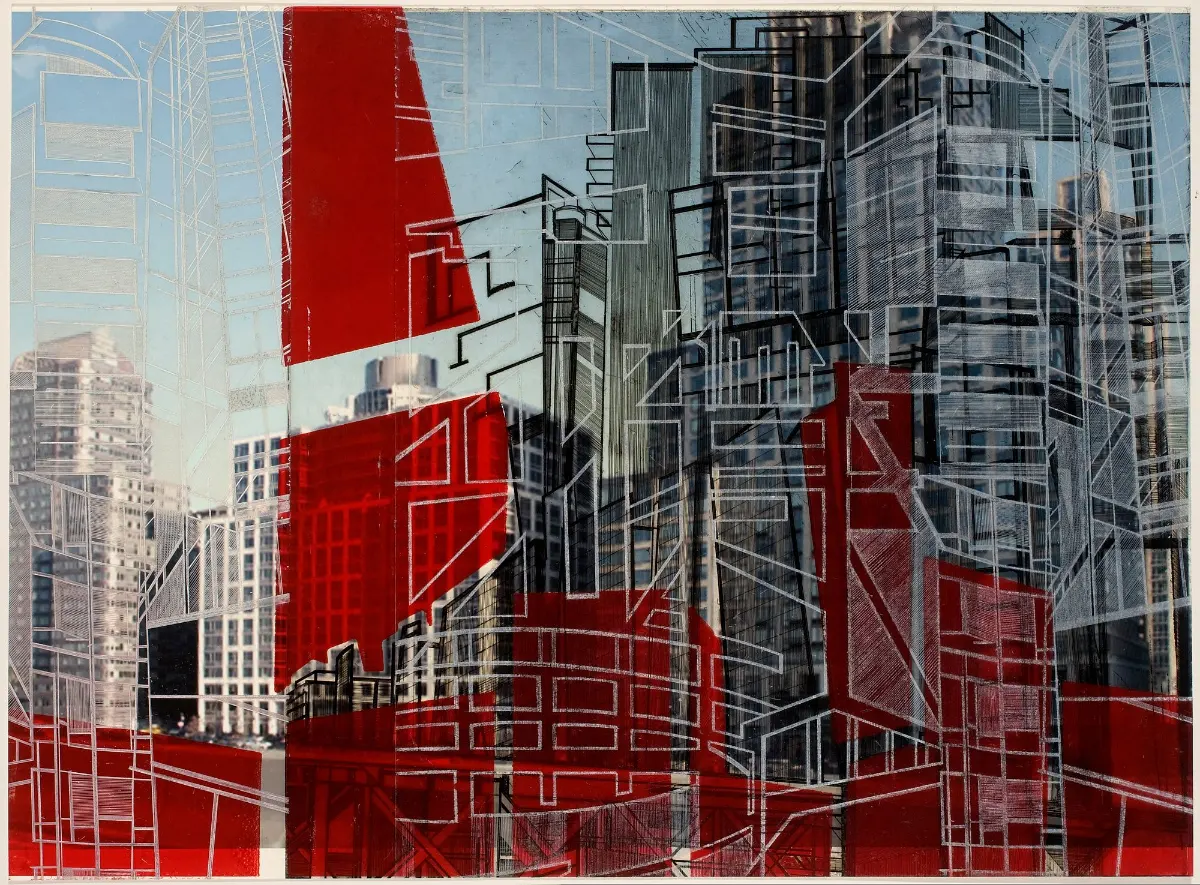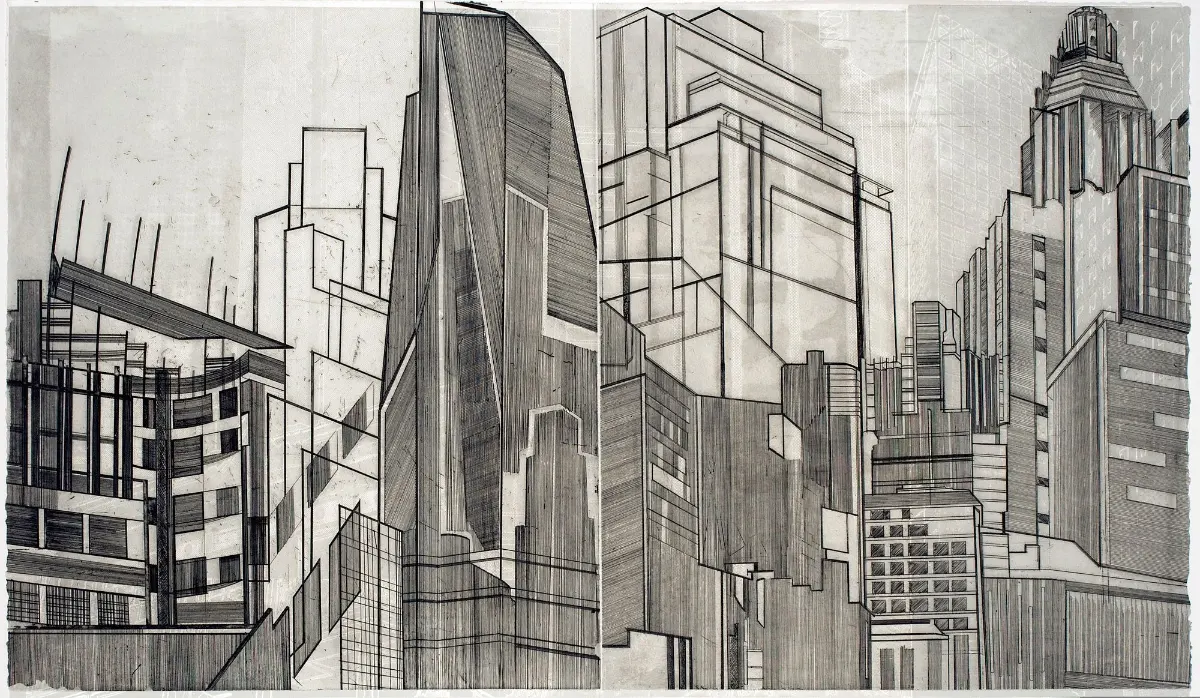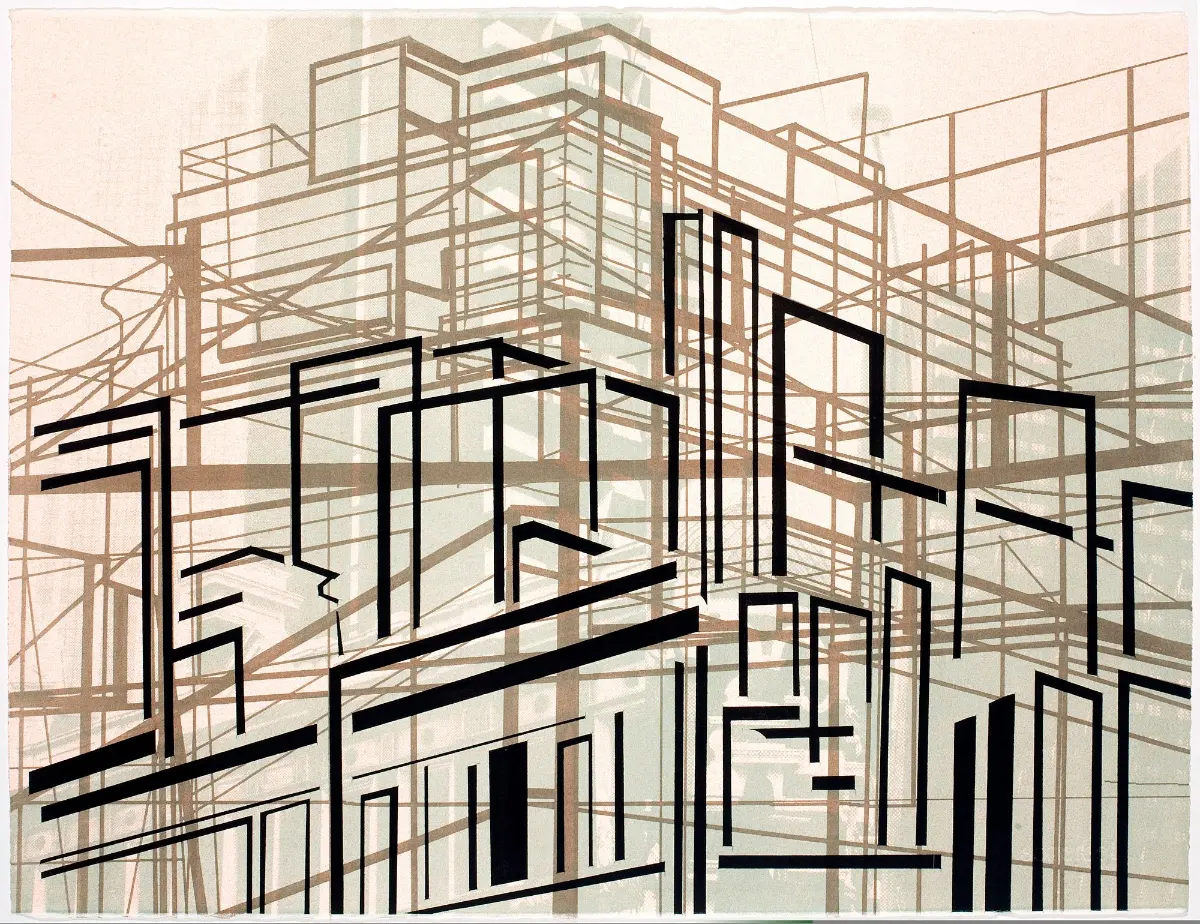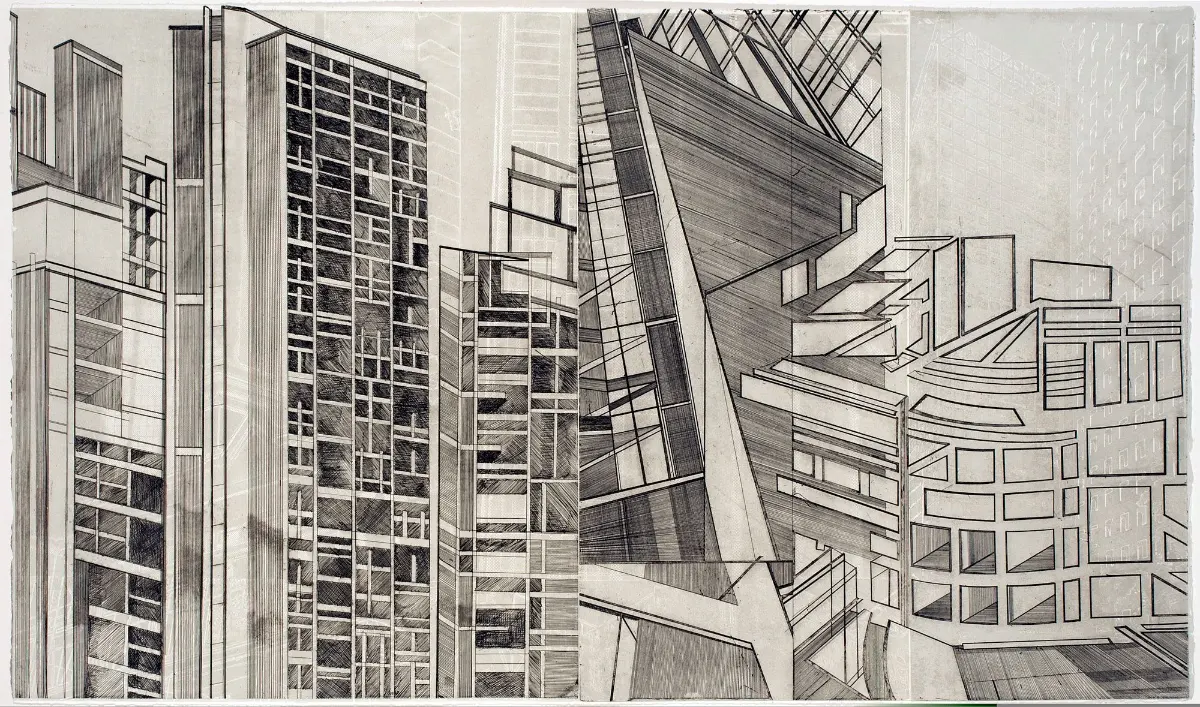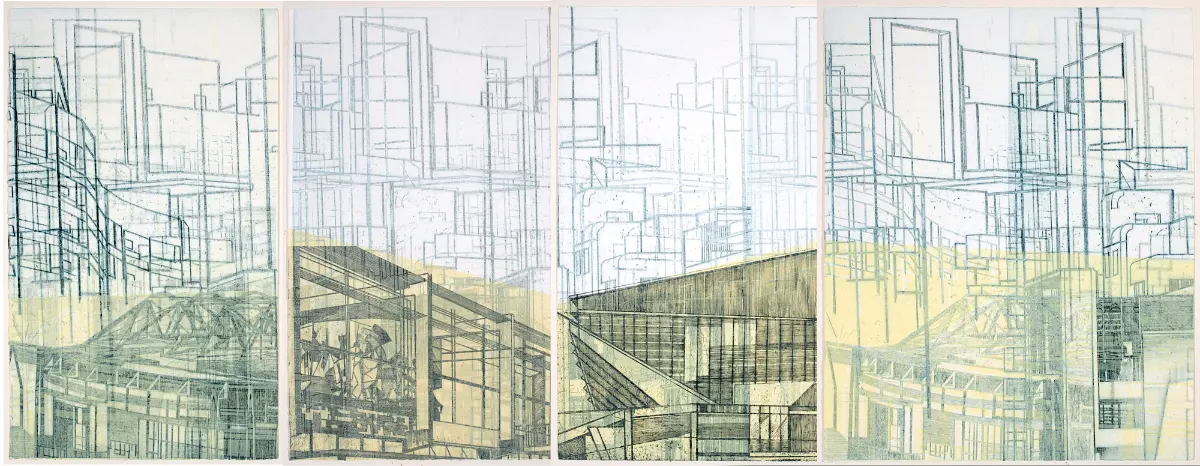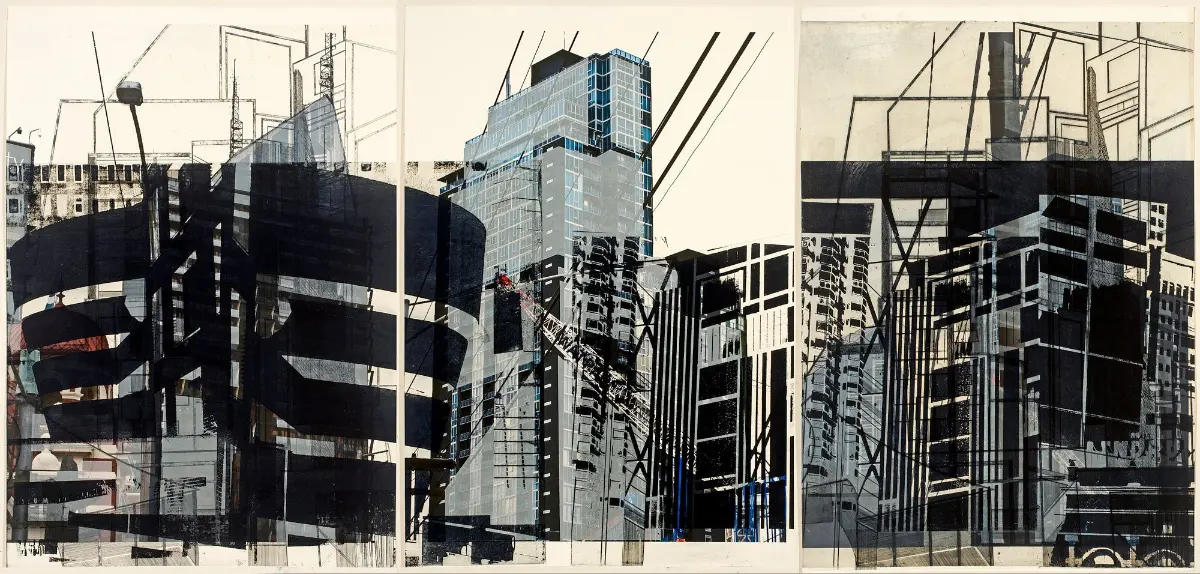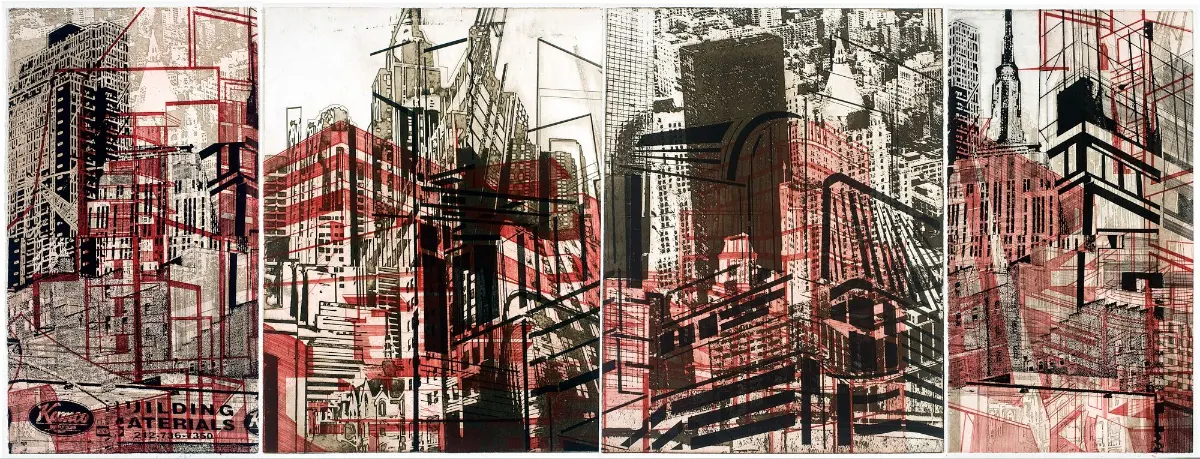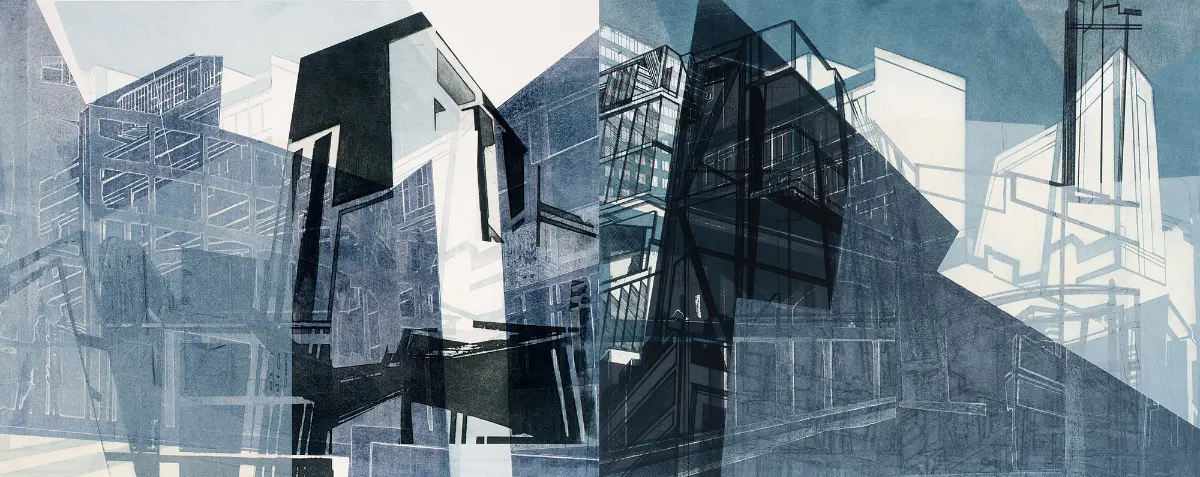Imagined cities 2011
Imagined Cities
by Christopher Heathcote
In 1954 the young American physics professor, and after hours writer, Isaac Asimov published an unforgettable dystopian novel he titled The Caves of Steel. In format it crossed the speculative future-casting of science fiction with the detective story genre of current radio thrillers and B grade movies (it was a source for the later feature film Bladerunner). Taking that post-war dream of unrestrained urban development to its conclusion, Asimov hung all on a simple premise: eventually our cities will physically expand outward and upward to the point where the entire surface of the earth is wrapped in an unbroken multi-storey megapolis.
What does this synthetic world look like? The writer shrewdly left much to the reader's imagination. There is the intermittent evocative phrase, like comparing crowded skyscrapers seen through a window to fingers reaching up, but otherwise there are no descriptions of the dense earth-enveloping metropolis. Which is why when I first read the novel, during my teens, my mind laid out that cityscape in a neat and tidy geometric order in keeping with the progressive values of Le Corbusier and high modernistic town planning.
Nowadays, I well know that cities necessarily swell and take on awkward or eccentric shapes, usually under economic pressures. So my imagination sketches in a crazed clutter of extensions and renovations and additions, Asimov's steel towers having been built on and tinkered with again and again and again until the whole thing has become a bewildering labyrinth-in other words, it has become one of those maze-like cities envisioned by Cat Poljski.
There is something simultaneously nauseating and fascinating about Poljski's grasp of our expanded high-tech cities. It comes from the visual excess. Tracking across the surface, reading building after building, from right to left and bottom to top, and also layered back into fading distance, the eye doesn't halt. There it is, the contemporary city, a slice of Shanghai or New York, of Sydney or Singapore.
Still, the excess Poljski relishes isn't just about the number and density of towers. It's the visual conflict of those close packed urban blocks, each making sense in its own terms; but all of them competing against, or noisily shouting down each other. Because not only does streamlined Art Deco collide with restrained International Style, sturdy 60s Brutalism and smart Postmodern eclecticism, but the flamboyant Dubai-style hotel meets mouldering municipal offices. Here is a burgeoning city, that combination of ten percent idealism and ninety percent compromise where precision engineered brushes balconies with cheap functionalism, even jerry-built ugliness.
The sources for these fascinating composition are manifold, and I do not mean merely the artist's use of architectural style. Historical photographs of urban landmarks will meet suggestions of the property brochure, the architect's illustration (note the tell-tale absence of people). The viewer would probably would probably expect this to result in discord, although somehow these differing representations of real estate fuse in a cohesive act of imagination. They merge and make total sense.
Pictorially there is more at play here than conceiving metaphors for an intensifying metropolitan environment. Scrutinising those compositions, really staring into them, their visual complexity becomes apparent. Much arises from layering, for Poljski builds each work by printing, then overprinting, and overprinting further that image sits on image. But this is hardly the start. She will print etching on photolithograph, or different plates over each other. sometimes masking sections, embossing, adding a colour, working the plate tone, and using laser cut stencils as well. Here it is pretty much all that the etching is capable of, and several new twists that the artist has devised herself. This adroit innovator will even print subtle white on pale dusky white.
Criticism is a mode of talent spotting. You spend the years visiting gallery after gallery, looking for the exhibition that sends a thrill into the imagination. It doesn't happen often, but it did when I walked into Poljski's last show. I was transfixed. And here they are again. These works are surely among the most visually and technically accomplished prints being produced in Australia today, and place Cat Poljski in the very front rank of contemporary printmaking.

